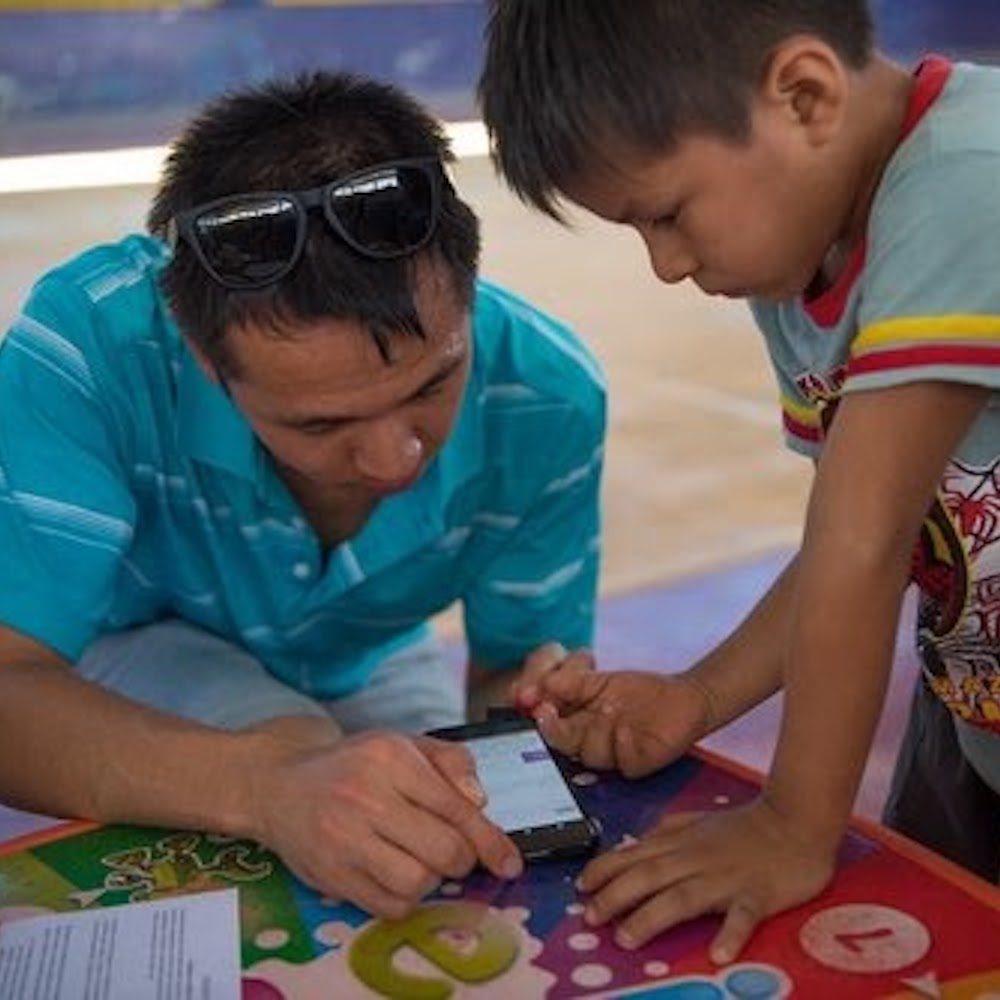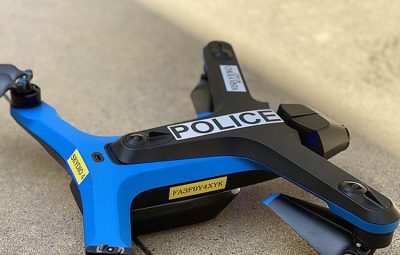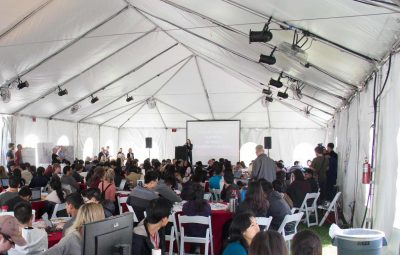Design Lab’s Edward Wang, who is a jointly appointed professor in Electrical & Computer Engineering in Jacobs School of Engineering at UC San Diego, wins a National Institutes of Health (NIH) R21 through the National Institute of Aging (NIA) for his work around transforming smartphones into pocket-sized personal health monitors.
The NIA has selected Design Lab’s Edward Wang, who directs the Digital Health Lab, to receive NIH R21 funding for his work with Co-investigator Eric Granholm, Director of UCSD’s Center for Mental Health Technology (MHTech), to develop a smartphone app that can screen for early signs of cognitive decline indicative of Alzheimer’s Disease (AD). An NIH R21, also known as the Exploratory/Development Grant, provides support in the early and conceptual stages of a project’s development. As part of a national push towards combating the debilitating effects of AD, the National Institute of Aging looked towards funding novel ways to screen for AD through the use of digital technologies.
Edward Wang (left), Eric Granholm (right)
In the proposal, “Smartphone Pupillometer for At-Home Screening for Risk of Alzheimer’s Disease,” Wang, along with MHTech director and professor of Psychiatry Eric Granholm, aims to leverage camera systems found in smartphones to capture pupillary responses to cognitive tests as an indicator of the integrity of a specific part of the brain, the locus coeruleus, that has been shown to be one of the first sites affected by AD-related processes. By taking advantage of the smartphone as the vehicle for conducting such a test, Wang and Granholm believe that this approach of using digital technologies to capture physiological signals has the potential of significantly driving down the cost of deploying these screening solutions widely to combat public health challenges like AD. “By further enhancing the signals that are captured using just your phone with signal processing and machine learning, we are able to derive, what are known as, digital biomarkers,” Wang says. This approach strongly aligns with the NIA’s Notice of Special Interest, which states that “current biomarkers for early detection of prodromal AD […] are costly and invasive”, and digital biomarkers “can be used to inform disease prediction and management at both the individual and populational level.”
AD is a progressive degenerative disorder of the brain and is the sixth leading cause of death in the United States, with the latest statistics showing that at least five million Americans over the age of 65 suffer from the disease. Not only is it the most common form of dementia of elderly adults, it is projected that cases of AD will double by 2025. By 2050, it is projected that a total annual cost for health care for people with AD will be more than $1 trillion. ADis clearly a public health crisis. “Our solution is based on previous findings in our research with older adults with mild cognitive impairment, where we studied how differences in pupil dilation in response to memory tests are associated with very early signs of AD,” Granholm says. “It is based on these findings that we are developing this smartphone solution.” If successful, Granholm notes, it would be possible for older adults to perform this test even in the comforts of their own home or by their primary care provider. This is compared with what is available today, which are far more invasive solutions like PET/MRI imaging and lumbar puncture for biomarkers in the spinal fluid.
As a faculty in the Design Lab, Wang has a particular interest in developing technologies through a lens of human centered design. Wang has had a record of inventing new smartphone-based health monitoring solutions such as hemoglobin/anemia screening, blood pressure monitoring, and ocular disease. In developing these solutions, Wang has worked with a wide range of collaborators across the world to develop and test these systems with end users to make sure that the purported solutions truly can work with the target users and in realistic conditions. “Sometimes what we find is that an idea works well in lab settings where we can control the lighting and temperature of the room, but completely fails in realistic conditions that screening tools like these have to operate under.”
Wang working in a village in the Amazon Jungle of Peru testing his smartphone hemoglobin monitor
In a previous workaround anemia screening, Wang worked with NGOs in Peru to bring his prototype app into villages nestled in the Amazonian Jungle, where NGO staff regularly travel to in order to perform anemia screening and treatments. “It turns out, we never considered that the main use case for our technology is really to screen for anemia in kids under 3 years old. Although the physics still holds, behaviorally, kids at that age are so different that we basically couldn’t get the kids to stay still long enough to be able to measure them with our app,” Wang reflects. “One of the common misconceptions in engineering research is that we can always build it to work better with enough resources once a technology leaves the lab,” Wang says, “The issue with that kind of approach is that sometimes that can lead us into solutions that don’t have a chance of working. That is why human centered design being a central loop in the research is so important.”
Wang notes that keeping the elder user base in mind is crucial in the success of this research endeavor. “One of the things I think is particularly interesting in working on digital technology for the older population is that it requires a lot more nuances around usability,” Wang explains. “Our big hope is that [our app] works with little to no training with either home care providers or with the older adults themselves.” Wang cautions, however, that these solutions are far from ready and requires extensive research on how well such digital biomarkers can differentiate diseases and how they will ultimately serve in the entire ecosystem of healthcare. “Our research aims to solve big healthcare problems by looking for creative ways to invent new ways our society can screen and treat diseases. But this shift that brings healthcare closer to everyday life, literally into our pockets, means that we will have to be very intentional in our designs of how people will use these technologies to be not only useful, but safe as well.”
Read more about Wang’s research on digital health technologies at UCSD.
Congratulations, Edward!








